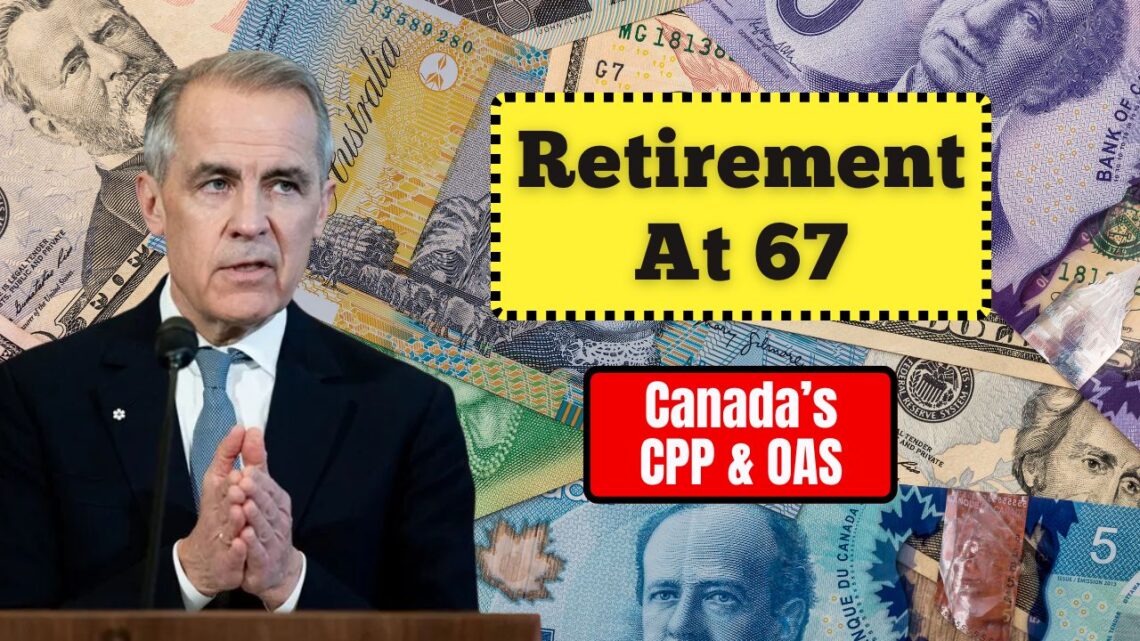For decades, Canadians viewed age 65 as the traditional mark of retirement. It was the time to stop working, collect Canada Pension Plan (CPP) and Old Age Security (OAS) benefits, and enjoy a slower pace of life. But that idea is rapidly changing.
With Canadians living longer, staying healthier, and working well into their late 60s, the federal government is adapting the system to ensure long-term sustainability.
Starting October 2025, new policy changes will gradually raise the retirement age to 67 for future pensioners, while keeping current retirees under the same structure.
This marks one of the most significant shifts in Canada’s retirement framework in decades.
Why the Retirement Change to 67?
1. Longevity and Economic Reality
Life expectancy has increased dramatically. The average Canadian now lives past 82 years, meaning many retirees draw benefits for nearly two decades.
This longevity places growing pressure on the pension system. Raising the eligibility age helps ensure the fund’s sustainability for future generations.
2. Fiscal Balance and Flexibility
Canada’s government is trying to balance two priorities — fiscal prudence and retirement flexibility. By allowing people to choose when to start their benefits (between 60 and 70 for CPP), it gives workers more control.
Delaying benefits results in higher monthly payments, which can significantly improve long-term financial security.
3. Incentivizing Longer Workforce Participation
The changes are designed to encourage Canadians to stay employed longer, reduce early withdrawals, and strengthen contribution levels.
This approach eases the strain on the national budget while allowing individuals to save more before retiring.
How the New CPP and OAS Framework Works
1. Canada Pension Plan (CPP)
The CPP remains a contributory pension that replaces a portion of your pre-retirement income. Canadians can choose when to start their pension between ages 60 and 70, but the payment amount varies greatly.
| Start Age | Payment % of Full Pension | Example Monthly Amount (Full = $1,433) |
|---|---|---|
| 60 | 64% (36% less) | $915 |
| 65 | 100% (Full) | $1,433 |
| 70 | 142% (42% more) | $2,030 |
If you delay CPP until 70, you’ll receive a much larger monthly payment — but for fewer years overall. It’s a strategic decision depending on your financial and health situation.
2. Old Age Security (OAS)
OAS is a non-contributory program funded by the federal government. It provides a monthly income to eligible Canadians aged 65 and older who meet residency requirements.
From October 2025, OAS base rates will rise slightly and adjust for inflation every quarter.
| Age Group | Monthly Amount (Oct 2025) |
|---|---|
| 65–74 years | $740.09 |
| 75+ years | $814.10 |
Retirees aged 75 and older continue to receive a 10% bonus increase to help offset age-related expenses like healthcare and living costs.
Eligibility Requirements for CPP and OAS
To qualify for OAS and CPP benefits under the new framework, Canadians must meet the following criteria:
- Must be a Canadian citizen or permanent resident.
- Must have lived in Canada for at least 10 years since the age of 18.
- To qualify for full OAS, residency of 40 years in Canada is required.
- For CPP, benefits depend on years of contribution to the plan.
- Applicants must have reached retirement age (currently 65, moving to 67 for new claimants).
- Must provide valid government ID and Social Insurance Number (SIN) when applying.
Payment Dates and Method
Payments are made monthly by direct deposit into registered accounts. The next combined CPP/OAS payment date will be October 29, 2025.
Both programs continue to adjust quarterly to match inflation levels, ensuring retirees maintain purchasing power despite rising costs.
Latest Developments
While the official retirement age remains 65, the government has approved a gradual increase to 67 beginning October 2025 for new applicants.
This change affects only future retirees, while those already receiving benefits will continue under the current rules.
The adjustment aims to protect Canada’s retirement system from economic pressures, increase long-term funding stability, and encourage personal financial planning.
It also ensures that citizens who are still working or saving for retirement can enjoy more options and higher payouts when delaying benefits.
The concept of a fixed retirement age is fading. With new CPP and OAS policies, Canada is embracing a future where retirement is defined by flexibility, longevity, and financial preparedness.
Raising the retirement age to 67 for new pensioners ensures a more stable, sustainable system for generations to come.
While some may see this as a delay, others view it as an opportunity — to save more, earn higher benefits, and retire on their own terms.
Whether you choose to step back at 60, stay until 70, or transition gradually, one thing is clear: Canada’s retirement landscape has entered a new era.
FAQs
What is the new retirement age in Canada?
The retirement age remains 65 for now, but from October 2025, new pensioners will need to wait until 67 to collect full CPP and OAS benefits.
What is the maximum CPP payment in 2025?
The maximum CPP payment at age 65 in 2025 is approximately $1,433 per month, with the amount increasing by 42% if claimed at 70.
Will current retirees be affected by the new rules?
No. Those already collecting CPP or OAS benefits will not be impacted by the new changes. The update applies only to new claimants after October 2025.









